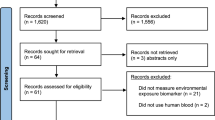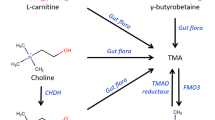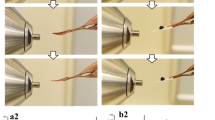Abstract
Phosphatidylethanol (PEth), which is formed by enzymatic reaction between ethanol and phosphatidylcholine, is a direct marker for alcohol usage. PEth has a long elimination half-life (~5–10 d) and specimens can be sampled using minimally invasive microsampling strategies. In combination with rapid analysis procedures PEth has proved to be advantageous for the detection of abstinence over other direct (e.g., ethyl glucuronide in blood, urine or hair) and indirect (e.g., carbohydrate-deficient transferrin in serum) alcohol markers. Although PEth determination is widely applied around the world, laboratory protocols are not standardized. Here we provide general guidelines for the analysis of PEth in dried blood spots (DBSs), including reference material evaluation, synthesis of a deuterated internal standard, preparation of calibration samples (reference material in teetotaller blood), and analyte separation and detection. The protocol contains information to extract the DBSs either manually or with a fully automated autosampler. Extraction of the analytes from DBS filter paper cards is performed using an organic extraction, followed by liquid chromatography coupled to tandem mass spectrometry (LC–MS/MS). For accurate and reliable measurement of PEth, the two most abundant analogs, PEth 16:0/18:1 and PEth 16:0/18:2, are quantified. We show data that provide guidelines on how to interpret the results for both demographic studies and forensic applications. The described protocol can be applied by experienced laboratory staff with basic LC–MS/MS knowledge and takes 2 d to perform.
This is a preview of subscription content, access via your institution
Access options
Access Nature and 54 other Nature Portfolio journals
Get Nature+, our best-value online-access subscription
$29.99 / 30 days
cancel any time
Subscribe to this journal
Receive 12 print issues and online access
$259.00 per year
only $21.58 per issue
Buy this article
- Purchase on Springer Link
- Instant access to full article PDF
Prices may be subject to local taxes which are calculated during checkout








Similar content being viewed by others
Data availability
Previously published articles contain a summarized evaluation of the data obtained. In collaboration with the University of California, San Francisco (Robin Fatch and Judy Hahn), we recently (21 October 2020) submitted to a journal a manuscript with the title ‘Comparisons of automated determination of phosphatidylethanol (PEth) in dried blood spots (DBS) with previous manual processing and testing’. This manuscript contains further data supporting the use of the presented method.
References
Varga, A., Hansson, P., Johnson, G. & Alling, C. Normalization rate and cellular localization of phosphatidylethanol in whole blood from chronic alcoholics. Clin. Chim. Acta 299, 141–150 (2000).
Gnann, H. et al. Identification of 48 homologues of phosphatidylethanol in blood by LC-ESI-MS/MS. Anal. Bioanal. Chem. 396, 2415–2423 (2010).
Simon, T. W. Providing context for phosphatidylethanol as a biomarker of alcohol consumption with a pharmacokinetic model. Regul. Toxicol. Pharmacol. 94, 163–171 (2018).
Javors, M. A., Hill-Kapturczak, N., Roache, J. D., Karns-Wright, T. E. & Dougherty, D. M. Characterization of the pharmacokinetics of phosphatidylethanol 16:0/18:1 and 16:0/18:2 in human whole blood after alcohol consumption in a clinical laboratory study. Alcohol. Clin. Exp. Res. 40, 1228–1234 (2016).
Luginbühl, M., Weinmann, W., Butzke, I. & Pfeifer, P. Monitoring of direct alcohol markers in alcohol use disorder patients during withdrawal treatment and successive rehabilitation. Drug Test. Anal. 11, 859–869 (2019).
Faller, A. et al. Stability of phosphatidylethanol species in spiked and authentic whole blood and matching dried blood spots. Int. J. Legal Med. 127, 603–610 (2013).
Kummer, N. et al. Quantification of phosphatidylethanol 16:0/18:1, 18:1/18:1, and 16:0/16:0 in venous blood and venous and capillary dried blood spots from patients in alcohol withdrawal and control volunteers. Anal. Bioanal. Chem. 408, 825–38 (2016).
Luginbühl, M., Gaugler, S. & Weinmann, W. Fully automated determination of phosphatidylethanol 16:0/18:1 and 16:0/18:2 in dried blood spots. J. Anal. Toxicol. 43, 489–496 (2019).
Tanna, S. & Lawson, G. Self-sampling and quantitative analysis of DBS: can it shift the balance in over-burdened healthcare systems? Bioanalysis 7, 1963–1966 (2015).
Luginbühl, M., et al. Variation in the relative isomer abundance of synthetic and biologically derived phosphatidylethanols and its consequences for reliable quantification. J. Anal. Toxicol. https://doi.org/10.1093/jat/bkaa034 (2020).
Schröck, A., Wurst, F. M., Thon, N. & Weinmann, W. Assessing phosphatidylethanol (PEth) levels reflecting different drinking habits in comparison to the alcohol use disorders identification test–C (AUDIT-C). Drug Alcohol Depend. 178, 80–86 (2017).
Schröck, A., Pfäffli, M., König, S. & Weinmann, W. Application of phosphatidylethanol (PEth) in whole blood in comparison to ethyl glucuronide in hair (hEtG) in driving aptitude assessment (DAA). Int. J. Legal Med. 130, 1527–1533 (2016).
Schröck, A., Thierauf-Emberger, A., Schürch, S. & Weinmann, W. Phosphatidylethanol (PEth) detected in blood for 3 to 12 days after single consumption of alcohol—a drinking study with 16 volunteers. Int. J. Legal Med. 131, 153–160 (2017).
Schröck, A., Thierauf, A., Wurst, F. M., Thon, N. & Weinmann, W. Progress in monitoring alcohol consumption and alcohol abuse by phosphatidylethanol. Bioanalysis 6, 2285–2294 (2014).
Luginbühl, M., Willem, S., Schürch, S. & Weinmann, W. Formation of phosphatidylethanol from endogenous phosphatidylcholines in animal tissues from pig, calf, and goat. Forensic Sci. Int. 283, 211–218 (2018).
Luginbuhl, M. & Gaugler, S. The application of fully automated dried blood spot analysis for liquid chromatography-tandem mass spectrometry using the CAMAG DBS-MS 500 autosampler. Clin. Biochem. 82, 33–39 (2020).
Andresen-Streichert, H. et al. Improved detection of alcohol consumption using the novel marker phosphatidylethanol in the transplant setting: results of a prospective study. Transpl. Int. 30, 611–620 (2017).
Fleming, M. F. et al. Phosphatidylethanol detects moderate-to-heavy alcohol use in liver transplant recipients. Alcohol. Clin. Exp. Res. 41, 857–862 (2017).
Schröck, A., Hernández Redondo, A., Martin Fabritius, M., König, S. & Weinmann, W. Phosphatidylethanol (PEth) in blood samples from “driving under the influence” cases as indicator for prolonged excessive alcohol consumption. Int. J. Legal Med. 130, 393–400 (2016).
Ulwelling, W. & Smith, K. The PEth blood test in the security environment: what it is; why it is important; and interpretative guidelines. J. Forensic Sci. 63, 1634–1640 (2018).
Helander, A. & Hansson, T. National harmonization of the alcohol biomarker PEth. Lakartidningen 110, 1747–1748 (2013).
World Anti-Doping Agency. WADA Technical Document TD2019DL v. 2.0. https://www.wada-ama.org/sites/default/files/resources/files/td2019dl_v2_finalb.pdf (2019).
Cowan, J. M., Weathermon, A., McCutcheon, J. R. & Oliver, R. D. Determination of volume of distribution for ethanol in male and female subjects. Anal. Toxicol. 20, 287–290 (1996).
Wurst, F. M. et al. Ethanol metabolites: their role in the assessment of alcohol intake. Alcohol. Clin. Exp. Res. 39, 2060–2072 (2015).
Hartmann, S. et al. Phosphatidylethanol as a sensitive and specific biomarker—comparison with gamma-glutamyl transpeptidase, mean corpuscular volume and carbohydrate-deficient transferrin. Addict. Biol. 12, 81–84 (2007).
Stewart, S. H., Koch, D. G., Willner, I. R., Anton, R. F. & Reuben, A. Validation of blood phosphatidylethanol as an alcohol consumption biomarker in patients with chronic liver disease. Alcohol. Clin. Exp. Res. 38, 1706–1711 (2014).
Afshar, M. et al. Cut-point levels of phosphatidylethanol to identify alcohol misuse in a mixed cohort including critically ill patients. Alcohol. Clin. Exp. Res. 41, 1745–1753 (2017).
Aradottir, S., Asanovka, G., Gjerss, S., Hansson, P. & Alling, C. Phosphatidylethanol (PEth) concentrations in blood are correlated to reported alcohol intake in alcohol-dependent patients. Alcohol Alcohol. 41, 431–437 (2006).
Luginbühl, M., Bekaert, B., Suesse, S. & Weinmann, W. Detox shampoos for EtG and FAEE in hair—results from in vitro experiments. Drug Test. Anal. 11, 870–877 (2019).
Luginbühl, M., Nussbaumer, S. & Weinmann, W. Decrease of ethyl glucuronide concentrations in hair after exposure to chlorinated swimming pool water. Drug Test. Anal. 10, 689–693 (2018).
Reisfield, G. M. et al. The roles of phosphatidylethanol (PEth), ethyl glucuronide (EtG), and ethyl sulfate (EtS) in identifying alcohol consumption among participants in professionals’ health programs. Drug Test. Anal. 12, 1102–1108 (2020).
Jones, J., Jones, M., Plate, C. & Lewis, D. The detection of 1-palmitoyl-2-oleoyl-sn-glycero-3-phosphoethanol in human dried blood spots. Anal. Methods 3, 1101–1106 (2011).
Wang, E. J., et al. HemaApp: noninvasive blood screening of hemoglobin using smartphone cameras. in UbiComp 2016—Proceedings of the 2016 ACM International Joint Conference on Pervasive and Ubiquitous Computing 593–604 (2016).
Capiau, S., Wilk, L. S., De Kesel, P. M. M., Aalders, M. C. G. & Stove, C. P. Correction for the hematocrit bias in dried blood spot analysis using a nondestructive, single-wavelength reflectance-based hematocrit prediction method. Anal. Chem. 90, 1795–1804 (2018).
Oostendorp, M., El Amrani, M., Diemel, E. C., Hekman, D. & Van Maarseveen, E. M. Measurement of hematocrit in dried blood spots using near-infrared spectroscopy: robust, fast, and nondestructive. Clin. Chem. 62, 1534–1536 (2016).
Velghe, S., Delahaye, L. & Stove, C. P. Is the hematocrit still an issue in quantitative dried blood spot analysis? J. Pharm. Biomed. Anal. 163, 188–196 (2019).
Abu-Rabie, P., Denniff, P., Spooner, N., Chowdhry, B. Z. & Pullen, F. S. Investigation of different approaches to incorporating internal standard in DBS quantitative bioanalytical workflows and their effect on nullifying hematocrit-based assay bias. Anal. Chem. 87, 4996–5003 (2015).
Schröck, A., Henzi, A., Bütikofer, P., König, S. & Weinmann, W. Determination of the formation rate of phosphatidylethanol by phospholipase D (PLD) in blood and test of two selective PLD inhibitors. Alcohol 73, 1–7 (2018).
Thompson, P. M. et al. Phosphatidylethanol in postmortem brain and serum ethanol at time of death. Alcohol. Clin. Exp. Res. 40, 2557–2562 (2016).
Weinmann, W., Schröck, A. & Wurst, F. M. Commentary on the paper of Thompson P. et al.: Phosphatidylethanol in postmortem brain and serum ethanol at time of death. Alcohol. Clin. Exp. Res. 41, 501–503 (2017).
Gustavsson, L. & Alling, C. Formation of phosphatidylethanol in rat brain by phospholipase D. Biochem. Biophys. Res. Commun. 142, 958–963 (1987).
Gomez-Cambronero, J. and Henkels, K. M. in Encyclopedia of Signaling Molecules (ed. Choi, S.) 3999–4010 (Springer International Publishing, 2018).
Gu, H., Liu, G., Wang, J., Aubry, A.-F. & Arnold, M. E. Selecting the correct weighting factors for linear and quadratic calibration curves with least-squares regression algorithm in bioanalytical LC-MS/MS assays and impacts of using incorrect weighting factors on curve stability, data quality, and assay performance. Anal. Chem. 86, 8959–8966 (2014).
US Food and Drug Administration. Bioanalytical Method Validation: Guidance for Industry. https://www.fda.gov/media/70858/download (2018).
Author information
Authors and Affiliations
Contributions
M.L. initiated the project. M.L., S.G. and W.W. planned and developed the project. A.S. initiated PEth measurements at the Institute of Forensic Medicine in Bern during her PhD thesis and wrote the first standard operating procedure for PEth analysis. M.L., S.G. and W.W. developed the fully automated method for PEth determination. F.S. has been responsible for the long-term application of the fully automated method for scientific research and analysing routine samples during the last 1.5 years of her PhD thesis. M.L., F.S., A.S., S.G. and W.W. wrote the manuscript; all authors contributed to the writing. M.L. and W.W. supervised the project.
Corresponding authors
Ethics declarations
Competing interests
M.L. and S.G. are employees of CAMAG, which focuses on providing fully automated DBS analysis solutions.
Additional information
Peer review information Nature Protocols thanks Gisela Skopp, Christophe Stove and the other, anonymous, reviewer(s) for their contribution to the peer review of this work.
Publisher’s note Springer Nature remains neutral with regard to jurisdictional claims in published maps and institutional affiliations.
Related links
Key references using this protocol
Luginbühl, M. et al. J. Anal. Toxicol. 43, 489–496 (2019): https://academic.oup.com/jat/article-abstract/43/6/489/5486352
Luginbühl, M. et al. J. Anal. Toxicol. bkaa034 (2020): https://academic.oup.com/jat/advance-article-abstract/doi/10.1093/jat/bkaa034/5815966
Fatch, R. et al. Comparisons of automated determination of phosphatidylethanol (PEth) in dried blood spots (DBS) with previous manual processing and testing. Submitted.
Luginbühl, M. et al. Drug Test Anal. 11, 859–869 (2019): https://onlinelibrary.wiley.com/doi/abs/10.1002/dta.2567
Key data used in this protocol
Luginbühl, M. et al. J. Anal. Toxicol. 43, 489–496 (2019): https://academic.oup.com/jat/article-abstract/43/6/489/5486352
Supplementary information
Rights and permissions
About this article
Cite this article
Luginbühl, M., Stöth, F., Schröck, A. et al. Quantitative determination of phosphatidylethanol in dried blood spots for monitoring alcohol abstinence. Nat Protoc 16, 283–308 (2021). https://doi.org/10.1038/s41596-020-00416-x
Received:
Accepted:
Published:
Issue Date:
DOI: https://doi.org/10.1038/s41596-020-00416-x
This article is cited by
-
Dried Blood Spot Sampling in Protein and Peptide Bioanalysis: Optimism, Experience, and the Path Forward
International Journal of Peptide Research and Therapeutics (2023)
-
Comments on “Evaluation and review of ways to differentiate sources of ethanol in post-mortem blood”
International Journal of Legal Medicine (2021)
Comments
By submitting a comment you agree to abide by our Terms and Community Guidelines. If you find something abusive or that does not comply with our terms or guidelines please flag it as inappropriate.



